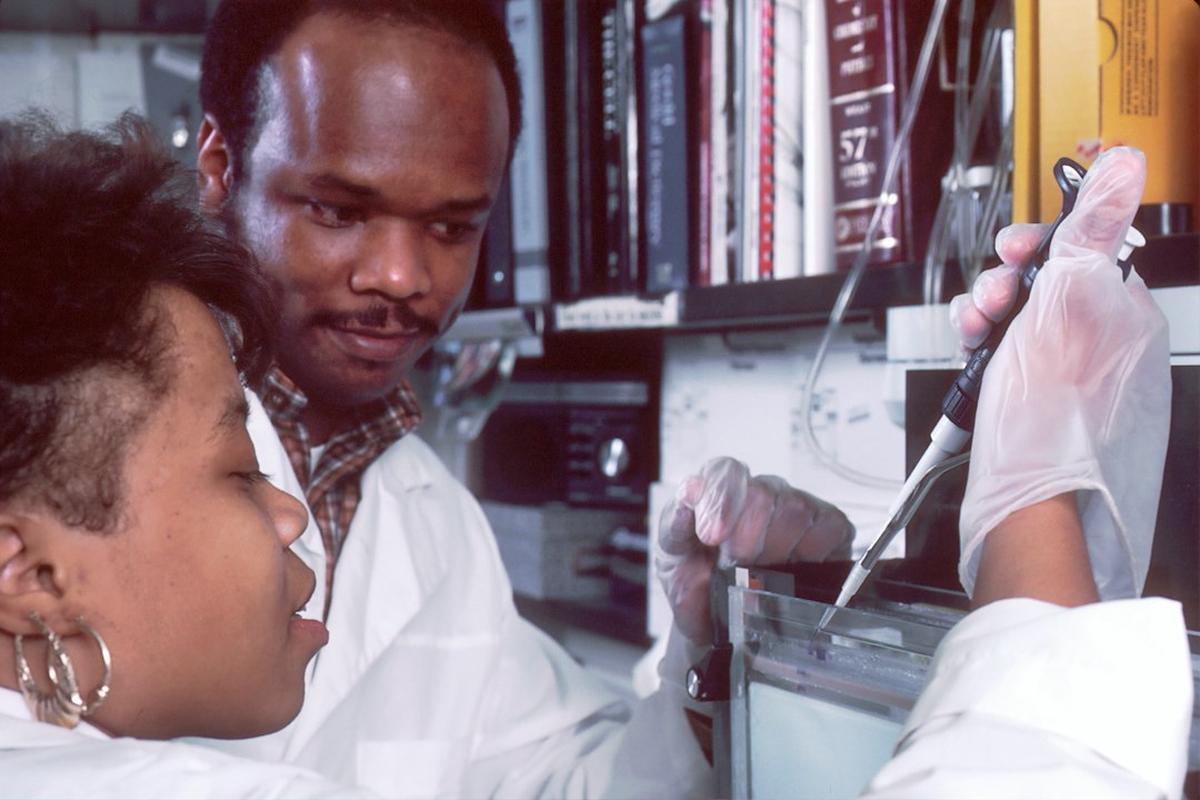The concept of evolution has fascinated scientists and researchers for centuries. It is the driving force behind the diversity and complexity of life on Earth. At the heart of this process are two crucial molecules: Deoxyribonucleic Acid (DNA) and Ribonucleic Acid (RNA). These molecules hold the keys to understanding how life has evolved over billions of years. This article aims to delve into the intricate roles of DNA and RNA in the evolutionary processes, shedding light on the molecular mechanisms that have shaped life as we know it.
Understanding DNA and RNA
Basic Structure and Function of DNA
DNA is a double-stranded molecule, composed of two helical chains coiled around each other. Each strand is a polymer of nucleotides, which are the basic building blocks of DNA. These nucleotides consist of a sugar, a phosphate group, and one of four nitrogenous bases: adenine (A), guanine (G), cytosine (C), or thymine (T). The order of these bases within the DNA sequence forms the genetic code, which instructs cells on how to build proteins.
Basic Structure and Function of RNA
RNA, on the other hand, is typically single-stranded and contains the sugar ribose instead of deoxyribose. It also uses the base uracil (U) in place of thymine. RNA plays several roles in the cell, but its primary function is to act as a messenger, carrying instructions from DNA for controlling the synthesis of proteins.
The RNA World Hypothesis
Explanation of the RNA World Hypothesis
The RNA World Hypothesis proposes that before DNA took over as the primary genetic material, early life forms used RNA for both storing genetic information and catalyzing chemical reactions. This idea is based on the unique ability of RNA to act as both a genetic material and an enzyme, a feature not shared by DNA or proteins.
Evidence Supporting the RNA World Hypothesis
Several lines of evidence support the RNA World Hypothesis. For instance, many critical coenzymes, such as ATP and NADH, are made up of ribonucleotides, suggesting a historical role for RNA in cellular metabolism. Additionally, RNA molecules known as ribozymes have been discovered that can catalyze their own replication, supporting the idea that RNA could have been the first self-replicating molecule.
Role of RNA in Early Evolution
RNA as a Genetic Material in Primitive Cells
RNA likely served as the genetic material in the earliest cells, storing the information needed for survival and reproduction. This information would have been passed on to subsequent generations through the process of RNA replication, driving the evolution of early life forms.
RNA as a Catalyst in Chemical Reactions
RNA also played a crucial role as a catalyst in early life forms. Ribozymes, RNA molecules with enzymatic activity, would have been capable of catalyzing a variety of chemical reactions, including those involved in RNA replication and protein synthesis. This dual role of RNA as both a genetic material and a catalyst would have been critical for the survival and evolution of early life forms.
Transition from RNA to DNA
Explanation of How DNA Took Over as the Genetic Material
Over time, it is believed that DNA took over the role of storing genetic information due to its greater stability compared to RNA. DNA’s double-stranded structure provides a backup copy of genetic information, reducing the risk of harmful mutations. Furthermore, DNA’s deoxyribose sugar is more chemically stable than RNA’s ribose sugar, making DNA a more reliable long-term storage medium for genetic information.
Factors Contributing to the Transition
The transition from RNA to DNA likely occurred gradually, driven by evolutionary pressures. As life forms became more complex, the need for a more stable and efficient genetic material became paramount. DNA, with its superior stability and capacity for storing information, would have been favored by natural selection, leading to its adoption as the primary genetic material.
Role of DNA in Evolution
DNA’s Role in Storing Genetic Information
DNA’s primary role in evolution is as the storehouse of genetic information. The DNA sequence within each organism’s cells contains the instructions for building every protein necessary for that organism’s survival and reproduction. This genetic information is passed on from generation to generation, driving the process of evolution.
DNA’s Role in Mutation and Natural Selection
Mutations, or changes in the DNA sequence, introduce variation into populations. This variation is the raw material upon which natural selection acts. Organisms with beneficial mutations are more likely to survive and reproduce, passing these advantageous traits on to their offspring. Over time, this process leads to the evolution of new species.
Proteins: The Major Catalyst and Structural Component of Cells
Role of Proteins in Cellular Functions
Proteins are the workhorses of the cell, performing a vast array of functions. They act as enzymes, catalyzing chemical reactions; as structural components, providing shape and support to cells; and as transporters, moving molecules across cell membranes, among other roles. The information for building these proteins is encoded in the DNA sequence.
Role of Proteins in Evolution
Proteins play a crucial role in evolution. Changes in the DNA sequence can lead to changes in the amino acid sequence of proteins, potentially altering their function. These changes can result in new traits, which can be acted upon by natural selection. Over time, this process can lead to the evolution of new species.
DNA, RNA, and Protein Interactions in Evolution
The Central Dogma of Molecular Biology
The central dogma of molecular biology describes the flow of genetic information within a biological system. It states that DNA is transcribed into RNA, which is then translated into protein. This process ensures that the genetic information stored in DNA is expressed as functional proteins.
How These Interactions Contribute to Evolution
The interactions between DNA, RNA, and proteins are fundamental to the process of evolution. Changes in the DNA sequence can lead to changes in the RNA and protein sequences, potentially resulting in new traits. These traits can then be acted upon by natural selection, driving the evolution of species.
Modern Perspectives on DNA, RNA, and Evolution
Current Research and Discoveries
Current research in the field of molecular evolution is uncovering new and exciting insights into the roles of DNA and RNA in evolution. For instance, studies have revealed that RNA molecules play a far more diverse set of roles in the cell than previously thought, suggesting that the RNA world may have been even more complex than we currently understand.
Implications for Understanding Evolution
These discoveries have profound implications for our understanding of evolution. They suggest that the molecular mechanisms driving evolution are far more intricate and nuanced than previously thought. This deepens our appreciation for the complexity and beauty of life on Earth and provides new avenues for research into the origins and evolution of life.
Closing Thoughts
Closing Thoughts, DNA and RNA play integral roles in the process of evolution. From the RNA world of early life forms to the DNA-driven evolution of modern organisms, these molecules have been at the heart of life’s incredible journey. As we continue to unravel the mysteries of evolution, the roles of DNA and RNA will undoubtedly remain central to our understanding. The future holds exciting prospects for further research in this fascinating area.
Frequently Asked Questions
What is the RNA World Hypothesis?
The RNA World Hypothesis proposes that before DNA took over as the primary genetic material, early life forms used RNA for both storing genetic information and catalyzing chemical reactions.
How did DNA take over from RNA as the primary genetic material?
DNA likely took over from RNA due to its greater stability. DNA’s double-stranded structure provides a backup copy of genetic information, reducing the risk of harmful mutations. Furthermore, DNA’s deoxyribose sugar is more chemically stable than RNA’s ribose sugar, making DNA a more reliable long-term storage medium for genetic information.
What is the role of DNA in evolution?
DNA’s primary role in evolution is as the storehouse of genetic information. Mutations in the DNA sequence introduce variation into populations, which is the raw material upon which natural selection acts.
How do proteins contribute to evolution?
Changes in the DNA sequence can lead to changes in the amino acid sequence of proteins, potentially altering their function. These changes can result in new traits, which can be acted upon by natural selection, leading to the evolution of new species.
What is the central dogma of molecular biology?
The central dogma of molecular biology describes the flow of genetic information within a biological system. It states that DNA is transcribed into RNA, which is then translated into protein.
What are the implications of current research on DNA, RNA, and evolution?
Current research suggests that the molecular mechanisms driving evolution are far more intricate and nuanced than previously thought. This deepens our understanding of the complexity of life and provides new avenues for research into the origins and evolution of life.
References
- Gilbert, W. (1986). Origin of life: The RNA world. Nature, 319(6055), 618.
- Joyce, G. F. (2002). The antiquity of RNA-based evolution. Nature, 418(6894), 214-221.
- Neveu, M., Kim, H. J., & Benner, S. A. (2013). The “strong” RNA world hypothesis: fifty years old. Astrobiology, 13(4), 391-403.
- Orgel, L. E. (2004). Prebiotic chemistry and the origin of the RNA world. Critical Reviews in Biochemistry and Molecular Biology, 39(2), 99-123.
- Crick, F. (1970). Central dogma of molecular biology. Nature, 227(5258), 561-563.








